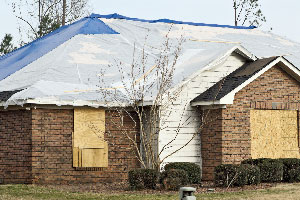
If your roof has been damaged, you may be worried about repairs or wondering what to do. Luckily, in many cases, your home insurance policy will pay for the cost of a new roof. Wondering how the process works? Here’s a look at the most important details and the truth behind some common myths.
1. COVERED DAMAGE
Insurers offer different levels of coverage, and you should contact your insurance company directly to see what’s covered. However, in most cases, homeowner’s insurance covers unpreventable damage such as that caused by fires or vandalism. For example, if a firecracker lands on your roof and starts a fire, your homeowner’s policy should usually cover that type of damage.
Similarly, acts of nature including hurricanes, tornadoes, hail storms, and wind are also usually covered.
Similarly, acts of nature including hurricanes, tornadoes, hail storms, and wind are also usually covered.
2. AMOUNT OF COVERAGE
Some policies cover the entire cost of replacing your roof. In these cases, you only pay your deductible. The insurance company pays for all the materials and labor to fix the roof.
In some cases, however, your policy may prorate your claim. For example, some homeowner’s insurance policies have a clause where they only cover partial replacement costs once the roof is past a certain age. For example, if you have a 30-year warranty and your roof is 20 years old, a prorated policy may cover a third of the cost of the new roof.
To figure out what your insurance covers, contact your agent, or look over the terms of your policy online.
3. ADDITIONAL POLICIES
In most cases, you rely on your homeowner’s policy to cover roof replacements. However, in some cases, you may want to make claims on an additional policy as well. To explain, imagine your roof was leaking and some of your possessions got moldy.
In these cases, you may be able to file a claim on your homeowner’s policy. However, if that type of damage is not covered, you may need to make a claim on your flood insurance.
4. APPEALING ADJUSTMENTS
If you decide to make a claim on your homeowner’s insurance policy, your insurer will typically send an adjuster to your home. This individual looks over the damage and decides if the insurance company will pay for the claim.
If you don’t agree with the adjuster’s assessment, you don’t have to accept it. Instead, you can request to have another adjuster look at the damage.
For example, if you are putting in a claim for a damaged roof, you should ask the roofing company to send an inspector. Ideally, the roofing inspector can look at the roof at the same time as the insurance adjuster. If the adjuster doesn’t agree with your claim, the roofing inspector can provide you with a second opinion. If the inspector thinks the claim is warranted, you can confidently ask for a new adjuster.
5. EFFECT ON PREMIUMS
Unfortunately, some homeowners are fearful about putting in claims, and they worry that their premiums will increase if they make a claim for a damaged roof or another issue. In most cases, this does not happen.
As a homeowner, you pay insurance premiums to protect yourself and your home in case of damage. When damage occurs, it makes sense to make a claim, and in most cases, your insurer will cover the cost of repairing a damaged roof.
At Vertex Roofing, we have been helping customers with damaged roofs for years. Through that time, we’ve helped lots of clients submit insurance claims. If your roof has been damaged, we’re ready to help. In addition to repairing your roof, we’ll help you file the claim.
With Vertex Roofing, you don’t have to worry about anything but making your roof a grade above the rest.
